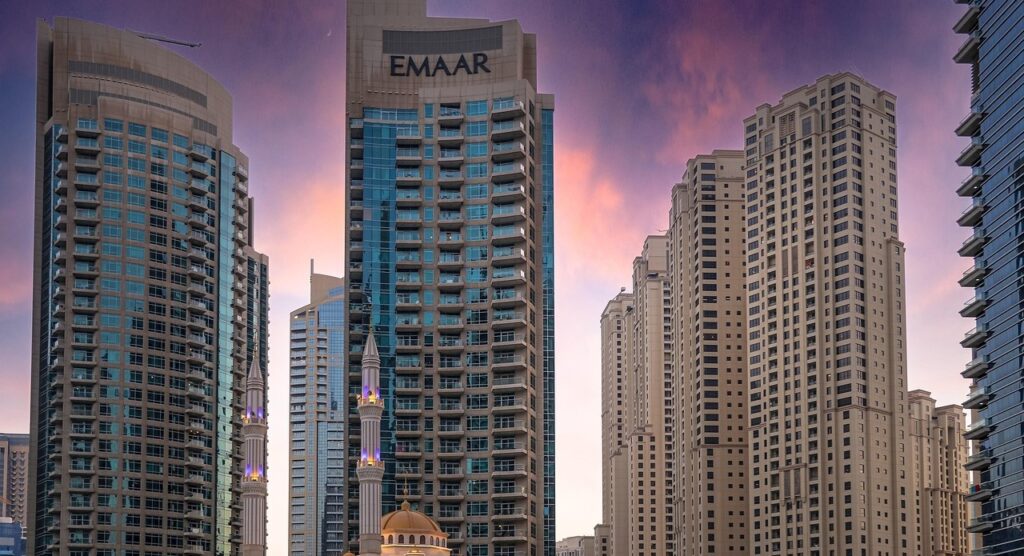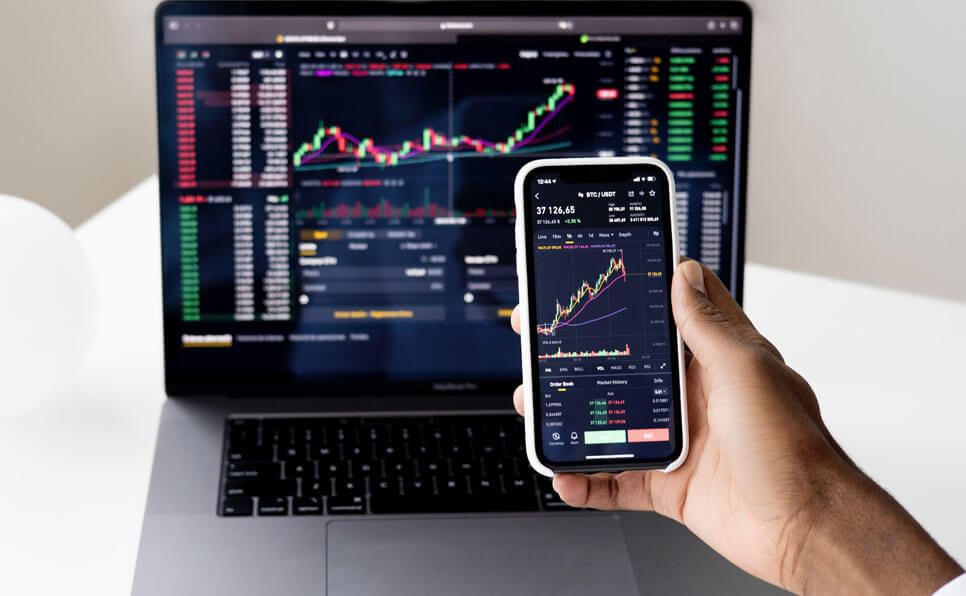Emaar Properties, Dubai’s flagship developer, is preparing to expand beyond its home market in an unprecedented way. Known for iconic landmarks such as the Burj Khalifa and master-planned communities across Dubai, Emaar is now setting its sights on international growth through mergers and acquisitions (M&A). The strategy represents a shift from its traditional focus on organic development to a more aggressive, acquisitive model.
The company is targeting some of the world’s largest and most lucrative markets namely the United States, Europe, India, and China. Rather than relying solely on new land acquisitions and in-house projects, Emaar plans to buy stakes in established developers or form joint ventures to accelerate its presence. This model offers quicker market entry while also leveraging the expertise of strong local players.
This move comes against the backdrop of robust financial health and booming property prices in Dubai, which have given Emaar both the confidence and the resources to think globally. For the first time in its history, the developer is actively positioning itself as a global player in real estate rather than a regional giant.
Why Now?
Emaar’s timing is deliberate. In 2024, the developer posted record profits of nearly AED 18.9 billion (USD 5.1 billion), a 25% year-on-year increase. The growth momentum carried into 2025, with net profit rising 34% in the first half of the year. These numbers underscore the strength of Dubai’s property boom, which has seen average residential prices climb by more than 67% since 2019.
Dubai’s real estate cycle has been buoyed by rising foreign investor demand, government reforms such as long-term visas, and the city’s reputation as a global hub. The surge in both luxury and mid-segment sales has left Emaar with a deep backlog of projects, significant cash reserves, and reduced reliance on debt. Together, these factors create the perfect conditions for international expansion.
For Emaar, this moment is also about scale and ambition. As Chairman Mohamed Alabbar has pointed out, Dubai alone cannot sustain the company’s growth indefinitely. To maintain momentum, Emaar needs to diversify geographically and tap into larger, more dynamic economies. The domestic boom provides the financial safety net required to take on this bold new challenge.
What Emaar Has Actually Said It’s Considering
Emaar’s leadership has publicly confirmed that it is studying opportunities in India, China, Europe, and the US, with different approaches tailored to each market. In India, where the company already has a major presence with more than 122 million sq ft of land, Emaar is exploring joint ventures with domestic giants. Discussions with the Adani Group have been reported, though the company has clarified it will not sell its Indian unit. Instead, partnerships are being considered to accelerate development and growth.
In China, Emaar is evaluating opportunities to collaborate with local developers who have strong urban pipelines but may benefit from foreign capital and international branding. The world’s largest housing market, despite current economic headwinds, remains attractive for a company of Emaar’s scale. Europe and the US also feature in its strategy, with the company considering acquisitions of majority stakes in established developers. This would give it instant access to prime land banks and operating expertise.
Alabbar has emphasized that acquiring local knowledge is as important as deploying capital. “We cannot simply replicate Dubai’s model everywhere,” he noted in recent interviews. Instead, Emaar’s vision is to adapt its business strategy to local markets, blending its signature large-scale community-building expertise with the strengths of domestic players.
Strategy: How Emaar Might Do It
The company’s international roadmap is built around three strategic pillars: acquisitions, joint ventures, and adaptation. First, acquisitions will give Emaar rapid entry into markets where it would otherwise take years to acquire land, secure permits, and establish a reputation. Buying into established players helps bypass these barriers.
Second, joint ventures are particularly attractive in countries like India and China, where foreign developers face regulatory and cultural hurdles. Partnering with leading domestic groups allows Emaar to share risks, gain credibility, and access established supply chains. In the Indian context, JVs could accelerate the development of township projects, luxury housing, and commercial hubs.
Third, Emaar plans to adapt its operations rather than impose a one-size-fits-all model. While Dubai thrives on large, integrated master-planned communities, markets like the US or Europe may require smaller, more specialized developments. By blending its global brand with local business practices, Emaar aims to capture new opportunities without alienating customers or regulators.
Finally, the company is expected to leverage its financial strength and land bank as bargaining chips in negotiations. With over 1.87 billion sq ft of land globally, including major holdings in Saudi Arabia and India, Emaar can use its scale to form powerful partnerships and attract financing from international investors.
Known Assets & Land Bank Abroad
Emaar’s global footprint already gives it a platform to expand. Beyond its UAE projects, the company controls over 175 million sq ft of land internationally. Its most prominent foreign ventures include Emaar Misr in Egypt, which has delivered townships like Uptown Cairo and Marassi, and its long-standing projects in India. Together, these prove the company’s ability to adapt to new geographies while maintaining brand consistency.
The developer’s stake in King Abdullah Economic City in Saudi Arabia, covering 1.1 billion sq ft, is another showcase of its capacity to manage mega-projects beyond Dubai. This experience strengthens its credibility when negotiating new ventures in complex markets.
By aligning its global ambitions with existing land banks and proven international operations, Emaar is signaling to investors that this is not a speculative gamble but a calculated strategy backed by tangible assets. The transition from regional to global developer is therefore not just aspirational it is increasingly within reach.
Risks and Caveats
While Emaar’s ambitions are bold, the challenges are significant. Each target market has its own regulatory complexities, from land ownership restrictions in India to licensing hurdles in Europe and fluctuating economic conditions in China. These differences could delay projects or raise costs.
The cyclical nature of global real estate markets also introduces risk. While Dubai is booming, some of Emaar’s target markets face slower growth or even downturns. Entering at the wrong time could lock the company into expensive commitments with lower-than-expected returns.
Cultural and operational integration is another challenge. Emaar will need to balance its brand identity with local preferences, construction standards, and pricing strategies. Missteps in these areas could reduce its competitiveness against entrenched domestic players. Finally, the capital allocation question looms large: aggressive acquisitions abroad must be weighed against the need to preserve liquidity and sustain shareholder dividends.
What to Watch For
Analysts and investors will closely monitor several signals in the coming months. The most critical will be formal announcements of acquisitions or joint ventures, particularly in India, where talks with Adani Group suggest imminent developments. Regulatory filings in Dubai or target countries will also provide insight into the scale of Emaar’s capital commitments.
Another key area is the expansion of overseas land banks. Moves to acquire land or stakes in developers abroad will validate Emaar’s intent to scale internationally. Similarly, the identification of strategic partners in China, Europe, or the US will reveal how quickly the company can execute its ambitions.
Financial results will also be scrutinized for clarity on how much of Emaar’s revenue will come from non-UAE projects in the future. A rising proportion of overseas earnings would mark the beginning of Emaar’s transformation into a truly global developer.
Implications if It Works
If Emaar succeeds, the impact will be transformative. The company will no longer be seen solely as a champion of Dubai’s real estate boom but as a global heavyweight capable of competing with the likes of China Vanke, Brookfield, or European giants such as Unibail-Rodamco-Westfield. Diversifying its earnings will also protect it from the cyclical swings of the UAE market, offering stability to shareholders and confidence to investors.
For local markets, Emaar’s entry could raise competitive pressure. Domestic developers in India or Europe may find themselves challenged by a brand with deep pockets, global credibility, and a track record of delivering mega-projects. Conversely, partnerships with Emaar could unlock new financing avenues, transfer know-how, and elevate construction quality in those regions.
At a macro level, Emaar’s expansion highlights the globalization of Gulf real estate capital. Much like sovereign wealth funds investing abroad, developers like Emaar are now exporting expertise, scale, and brand power. This could set a precedent for other Middle Eastern developers to follow suit, reshaping the global property industry.
Bottom Line
Emaar Properties is entering a decisive new era. Armed with record profits, a massive land bank, and a booming home market, it is pursuing M&A-led expansion into some of the world’s largest economies. India is likely to be the first major frontier, with partnerships instead of divestments, while the US, Europe, and China represent longer-term opportunities.
The risks are high, ranging from regulatory hurdles to timing challenges, but so are the potential rewards. If Emaar executes its plan effectively, it could transition from being the architect of Dubai’s modern skyline to a global real estate powerhouse. The next few months will reveal whether the company can translate its ambition into concrete deals that reshape its future.



